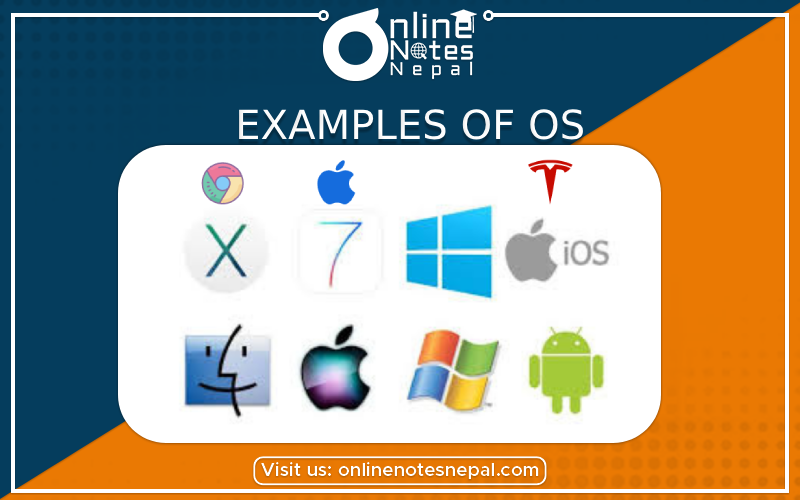Published by: Sujan
Published date: 18 Jun 2021

MS-DOS, Windows family of operating systems, Unix OS, Linux OS, and Mac OS are some of examples of commonly used OS.
Each operating system has specific characteristics.
We will discuss about MS-DOS, Windows family of operating systems, and Linux operating system.
MS-DOS was the first widely-installed operating system for PCs in the 1980s.
MS-DOS is easy to load and install.
It neither requires much memory for the operating system, nor a very powerful computer to run on.
MS-DOS is a command-line user interface operating system.
This means that the user has to type single-line commands through the command interface.
So, the user has to remember the different commands and their syntax.
It is a single-user and single-tasking operating system for the PC.
Only one user can use it and only one task can be executed, at a given point of time.
MS-DOS is a 16-bit OS.
To get the MS-DOS command prompt in the Windows environment;
Type “cmd”
Windows is a personal computer operating system from Microsoft.
The Windows Series includes (Windows 95, Windows 98, Windows 2000, Windows XP, Windows Vista, and Windows 7, Windows 8, Windows 10) operating systems.
Windows family of OS is a GUI-based operating system.
Since GUI interfaces are easy to use and are user-friendly, these have become very popular.
Windows support multi-tasking.
It means Windows OS allows the simultaneous execution of multiple tasks.
Windows contains built-in networking, which allows users to share files and applications with each other, if their PCs are connected to a network.
Windows 7 comes in six different editions, Starter, Home Basic, Home Premium, Professional, Enterprise & Ultimate.
With each new version of the Windows OS, the user interface undergoes some changes and the user has to learn to use the new interface.
Windows OS has evolved from Windows 1.0 in 1985.
In 1985 Windows 1.0, It was not successful
In 1990 Windows 3.0 , It was the first commercially successful version of Windows.
In 1993 it was upgraded to Windows NT 3.1
The first Microsoft OS not based on DOS.
Separate versions of NT with their DOS released 1995 Windows 95. The first 32 bit OS.
In1998 Windows 98 Microsoft integrates its web browser in the GUI and file manager.
In 2000 Windows 2000 as with Windows 95, Microsoft planned Windows 2000 to merge the NT and DOS-based OS’s but was unsuccessful.
2001 Windows XP, Windows XP successfully merges the compatibility found in Windows 98 with the stability found in Windows NT/2000.
It provides enhanced stability over Windows 98.
In 2005 Windows XP Professional x64 Edition.
In 2008 Windows Vista First 3D operating system.
In 2009 Windows 7 Some of the new features included in Windows 7 are advancements in touch, speech, and handwriting recognition, support for virtual hard disks, support for additional file formats, improved performance on multi-core processors, improved boot performance, and kernel improvements.
In Oct 26 2012 Window 8 was introduced major changes to the operating system's platform and user interface to improve its user experience on tablets.
Although reaction towards its performance improvements, security enhancements, and improved support for touch screen devices was positive, the new user interface of the operating system was widely criticized for being potentially confusing and difficult to learn, especially when used with a keyboard and mouse instead of a touch screen.
In October 17, 2013, Microsoft released Windows 8.1
In July 29 2015 Win 10.
One of Windows 10's most notable features is support for universal apps.
Universal apps can be designed to run across multiple Microsoft product families with nearly identical code : — including PCs, tablets, smartphones, embedded systems, etc.
Windows 10 also introduced the Microsoft Edge web browser, a virtual desktop system, a window and desktop management feature called Task View, support for fingerprint and face recognition login, new security features for enterprise environments & much more.
This OS is widely used nowadays.`
Linux is a Unix-like OS.
Unix OS has a user interface called the shell.
The kernel provides interface for the programs to interact with the hardware, and provides services like process management and memory management.
The shell interacts with the kernel through the system calls.
Linux was developed by Linus Torvalds on September 17, 1991.
Linux is copyright under the GNU Public License.
Linux is a “free” operating system that is easily available.
Since Linux follows the open development model, it is being constantly upgraded by programmers across the globe.
Some organizations offer Linux with add-on features and capabilities.
Red Hat, Mandrake, Debian, and Novell are the popular vendors of Linux OS.
Linux is a command-line user interface OS.
Linux has also GUI interfaces called desktop environments.
It supports multiple users and multiple processors.
Linux is a reliable and secure OS, and is available almost for free.
So, Linux is fast becoming a very popular and powerful OS.
Linux OS is easily available, such as Redhat Linux, Fedora & Debian’s— ( Ubuntu, Kubuntu, Edubuntu, KaliLinux, )etc.